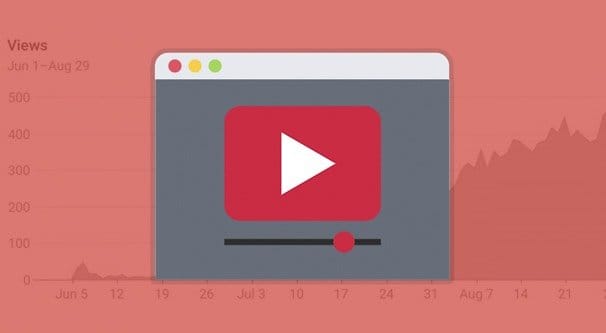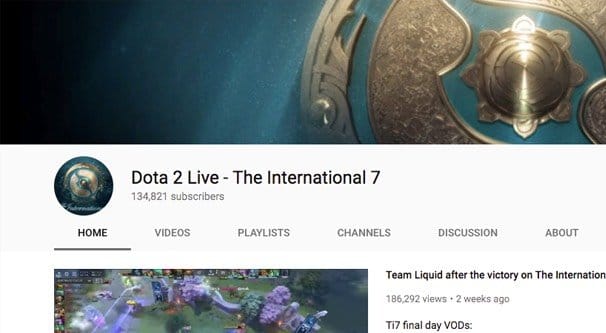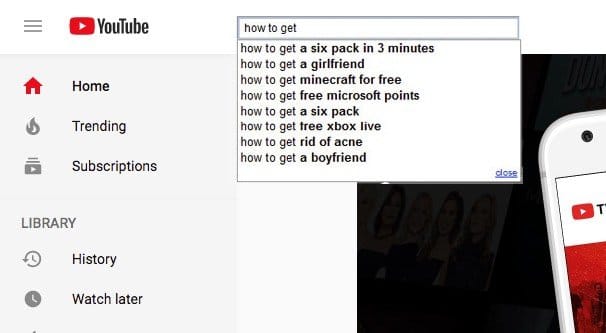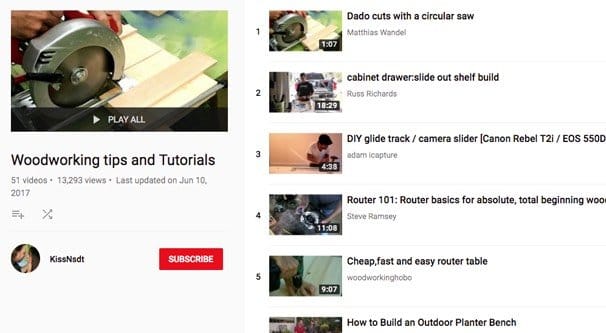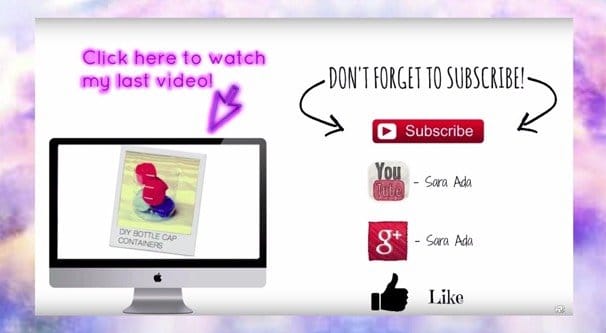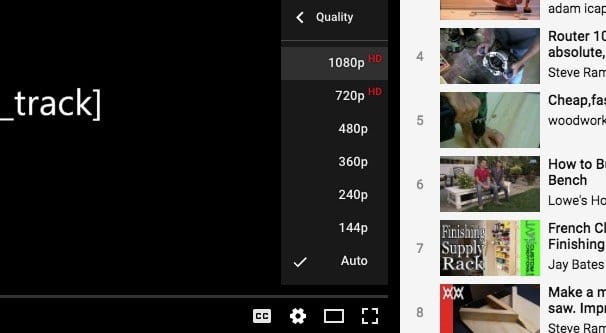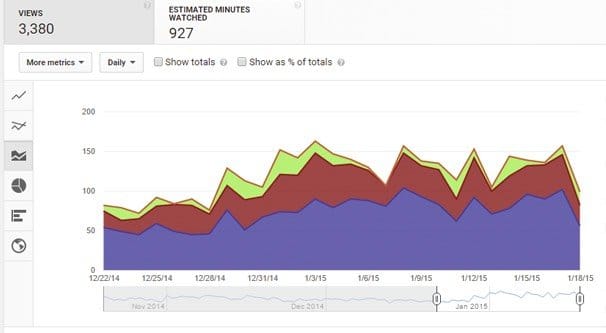 Written by ContentPowered.com
Written by ContentPowered.comYou might not think of SEO as something relating to videos, but with YouTube, it’s actually extremely important. To give you a quick example, I know someone with a channel that has 77 subscribers. They’ve posted dozens of videos, which range in popularity from under 20 views to around 1,000 views. Then one video – which had no additional promotion, just a few search optimizations – caught on. That one video racked up 51,000 views in a little over a year, and still brings in comments, subscribers, views, and ad revenue on a daily basis.
That should give you an idea of how important it is to optimize your videos. The one in question had a few things going for it; it was a rare occurrence in a video game that had just come out, so it was able to latch on to traffic due to its unusual circumstances. However, the vast majority of its longevity and its performance comes from gaining circulation through YouTube’s video recommendations.
You can do a lot better than my friend’s casual gamer channel. If you put some serious thought and effort into YouTube SEO, you can repeat that kind of performance with every video. Here are the tips I’ve found for doing exactly that.
Pick a Narrow Niche
YouTube visitors watch over a billion hours of video every single day. On the other hand, over 400 hours worth of content is uploaded every single minute on the site, so even though there’s an immense amount of usage, there’s also an immense amount of content competing for that attention. You have to factor in all of the content that’s already published as well as content being uploaded right this very second.
There’s absolutely no way you can run a general interest channel on YouTube and have any chance of success, unless you’re already a successful general interest or news blog. Forbes could step in and make a new channel and have a decent chance at success, but I couldn’t.
Picking a narrow niche gives you focus, which means you’re more able to reach a specific audience. Even something as broad as “gaming” can work, though there are channels that specifically focus on narrow sub-niches, like exclusively videos about Minecraft or DOTA2 or PlayerUnknown’s Battlegrounds.
The key here is search and recommendation visibility. If I run a search for Minecraft content on YouTube and find your video, I might check out your channel to see if you have more Minecraft content for me. If I hit upon a playlist, I’ll be able to browse through it or just autoplay through it all. If it’s not in a playlist, YouTube is still fairly likely to recommend more content from you before recommending content from other creators.
At the same time, if I view someone else’s Minecraft content, the recommendation engine can show me some of your Minecraft content too, and I can jump from one channel to another. By posting content in that niche, you have a greater chance of showing up in recommendations for similar content, and a greater chance of keeping people around when they’re interested in that content.
When you try to diversify, you end up all over the place. Fewer people will stick around because you have less content they’re interested in. They also won’t subscribe, because they aren’t certain you’re going to post more content they’re interested in seeing.
Do Your Keyword Research
Remember the old days of SEO, where you had a meta keywords field you could pack with relevant keywords, and make your page show up more for queries relating to those keywords? That feature has been deprecated for web SEO for years, since it was abused by spammers. However, video SEO still makes heavy use of this feature. This is primarily because the ability to parse audio and video content – as opposed to text – is still in its infancy. Until Google is able to accurately parse video content they way they can text, using keywords is essential.
You’ll want to do keyword research for your topic and your video, and plug in keywords that match. Use a couple of keywords organically in your title and description for your video, but save most of them for the actual keywords section. Don’t be the person who has no idea how keywords work and spams them in a list at the end of your description.
This article from Kissmetrics does a really good job of covering the basic optimization you want to be doing. The title, description, keywords, and other meta data can be very important.
Build Playlists
When a user views a video on YouTube, either they’re there for the one video and will leave, or they’re on a binge and moving from video to video. When the user finishes a video, either they will move on to a related video or they will move on to the next video in the playlist. Playlists keep people interested in your topic moving from one video to the next within your channel, which gives you views and allows them to comment on more of your content.
If you don’t have a playlist – even if you have related content – the related videos box will show up at the end and show off half a dozen videos that aren’t on your channel. It’s entirely possible none of your videos will show up even if you have related videos, if the competition has enough SEO visibility.
Make a Video End Card
One of the more recent trends with YouTube videos, primarily among creators, is the endcap or end card. You know how, when you hit the end of a YouTube video, you get a bit from the creator with a few links out to places they might want you to visit, other videos they might recommend, and that sort of thing? For example, check out this video. The link there should take you to 4:19 in the video, which is where the creator’s endcap starts.
Here, the creator gives you a bit of background information and offers a few calls to action. You can see a link in the corner to buy the song on iTunes, a link to subscribe shows up after a second or two, a couple of related video thumbnails pop up with links to view those videos, and only after a minute of this does the actual video end and the YouTube-generated recommended videos box appear.
This is a way you can get around not being shown by the recommendation engine; make one yourself. Keep people interested in your channel, you videos, and your community. You also don’t have to keep them on the site; you can send them off to iTunes, a Podcast site, your website, your store, or anything else you want to link.
Hook Viewers Early
One of the core elements of YouTube’s recommendation engine is the number of valid views the video gets. A YouTube view generally has to last longer than 30 seconds for it to really be counted as a good view, so you need to hook people quickly and keep them around for at least half a minute. This means no long intros, no extremely short videos, and an emphasis on early hooks. Get people interested right away, so their views count and push you up in the rankings.
Make Your Videos Awesome
It should go without saying, but you want the best content you can possibly make. You don’t need some flashy intro card, but you do need high quality content. A good visual style can go a long way for both an attractive video and branding purposes.
On a technical level, you want to film in at least 720p. Most people these days use 1080p, or even create 4K videos, though the market for those is slim unless you’re going all-in with impressive computer-generated effects. 720 strikes the right balance between high resolution – it’s HD – and small files for fast loading speeds. Remember, a huge portion of YouTube usership is mobile.
You want an attractive thumbnail that conveys your brand without necessarily actually including a brand name or logo. Sometimes colors and a consistent design is enough. Remember, if everything is overly branded, it turns people away.
If your content is heavy on verbal meaning – that is, not reliant on graphics, framing, or other visual content – you might want to create and upload a video transcript. A transcript wouldn’t help much for, say, a CGI tech demo, but it can be great for something like a Moz Whiteboard Friday or a music video where the lyrics could be indexed for further value.
A transcript allows Google to index the actual text content of the video, and provide accurate subtitles to people who are watching. It’s beneficial for accessibility and for visibility. You can read about transcripts here.
One of the most important elements of creating a video is having crisp, clear audio that’s balanced right. You might want background music behind your discussion; make sure you can still hear discussion over the music. Make sure you don’t have mic static or echo. I can’t give you specific tips about this, because it relies on the sort of hardware and software you have available, but suffice to say that it can be very worthwhile to hire someone who knows what they’re doing to help set you up.
Learn YouTube’s Metrics
YouTube determines the rank of a video and how well it should be recommended based on a number of different factors.
Learn them all and optimize all of them.
- Topic. I already discussed this above; you get more visibility and recommendations the more you cover one topic across your videos, and one video will see preferential visibility the more it focuses on one topic.
- Viewer retention. Views under 30 seconds long have very little weight, but longer views have more. If a high proportion of people watch 90% or more of your video, it’s a sign that the video is quite good and worth watching and recommending.
- Comments. User engagement, primarily expressed in comments, helps a video succeed. You can’t scam this; spam comments are flagged and your own comments don’t count. However, you can ask people to comment in the video itself and in the description.
- Subscriptions. People watching your videos are given the option to subscribe in the panel below the video, and you can create a subscription link in your video itself, in an endcap if you want. When a user watches a video and subscribes because of it, that video gets more visibility.
- Shares. People who recommend your video to their friends via an embed or a share on a social network, be that network Reddit, Facebook, Twitter, LinkedIn, Tumblr, or whatever else they use, benefit your video. Shares not only pull in traffic from other areas of the web, it makes the video more likely to be recommended on YouTube itself.
- Favorites. When people add your video to a list of their favorites, it gives the video a slight boost to site-wide SEO, but it also makes that user more likely to see more videos from you in the future.
- Thumb ratings. When a user thumbs up a video it gets benefits, both in your channel visibility to that user and your video visibility across the site. When they thumbs down, well, that’s obviously a bad thing.
You can also see a lot of your video analytics statistics in YouTube’s creator dashboard. You can see your ad revenues, your trends with engagement and views, and so forth. It’s worthwhile to keep your eye on these, though don’t let degrading trends slow you down. YouTube visibility and viewership decline over time, even with evergreen videos, particularly if you’re not sharing more content on a regular basis.
Once you get a handle on YouTube creation, a lot of this will become second nature to you, so don’t worry about being overwhelmed. Just focus on getting everything above a certain minimum baseline, and then optimize one aspect at a time. You might surprise yourself with the growth you’re capable of.
